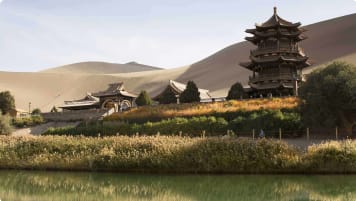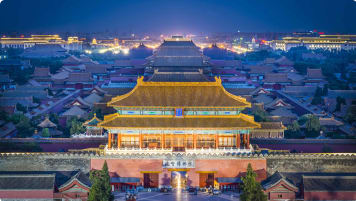Books to read about the Silk Road
Best books to read about the Silk Road – a list for senior travellers The linking of Asia to Europe via Eurasia for conquest and trade since at least 120BC is a unique part of…
30 May 18 · 2 mins read
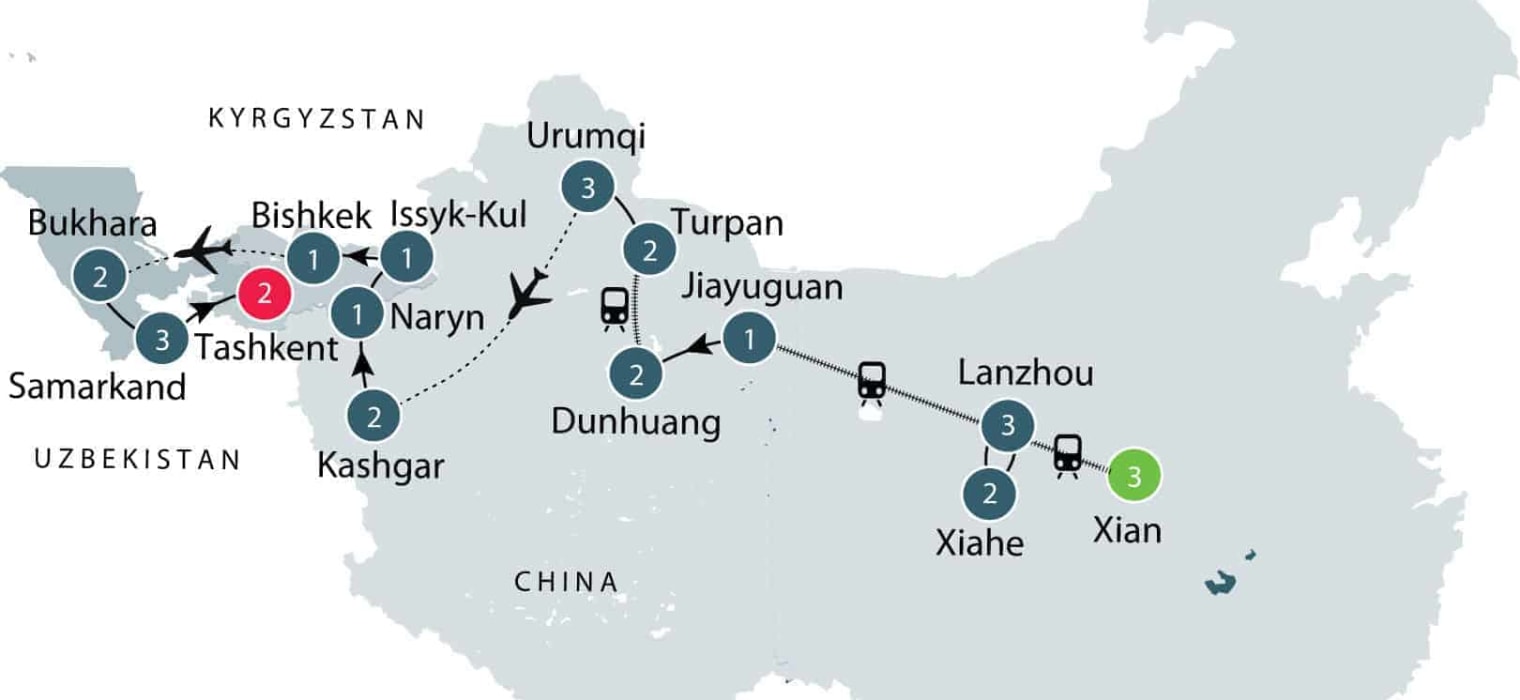
Best books to read about the Silk Road – a list for senior travellers
The linking of Asia to Europe via Eurasia for conquest and trade since at least 120BC is a unique part of the worlds history. Along this collection of interconnecting pathways, tracks and roads people invaded other nations as well transported knowledge, ideas, cultures, beliefs, rare commodities, precious stones spices, silks and other foodstuffs typically east to west. It was not just one road but an interesting connections of intricate trade routes from Xian in East Asia through to Venice in Western Europe via the middle east, Ancient Persia and Asia Minor .
It is a historic window on civilisation not only on trade but also the invasion of religion into regions of the far east. For Odyssey travellers The Silk road, The Stans, The Caucasus, Iran and Turkey small group tours provide the chance to explore and journey into these astounding pasts with a network of intricate trade routes and to learn about the evolution of culture and history over several thousands of years.
The silk road book collection provides fascinating insights into this period of human history. However as David Abulafia in his book “The boundless sea” states only some 10% of all goods moved overland, the oceans have always carried the vast majority of goods. The following list of books to read for the Silk Road should assist you in preparing for this journey, whether from your armchair or in the field.
Please do not hesitate to contact us if you would like to know more about our collection of tours across the silk road region.
The Silk Road in World History
by Xinru Liu
The Silk Road was the contemporary name for a complex of ancient trade routes linking East Asia with Central Asia, South Asia, and the Mediterranean world. This network of exchange emerged along the borders between agricultural China and the steppe nomads during the Han Dynasty (206 B.C.E.-220 C.E.), in consequence of the inter-dependence and the conflicts of these two distinctive societies. In their quest for horses, fragrances, spices, gems, glassware, and other exotics from the lands to their west, the Han Empire extended its dominion over the oases around the Takla Makan Desert and sent silk all the way to the Mediterranean, either through the land routes leading to the caravan city of Palmyra in Syria desert, or by way of northwest India, the Arabian Sea and the Red Sea, landing at Alexandria. The Silk Road survived the turmoil of the demise of the Han and Roman Empires, reached its golden age during the early middle age, when the Byzantine Empire and the Tang Empire became centres of silk culture and established the models for high culture of the Eurasian world. The coming of Islam extended silk culture to an even larger area and paved the way for an expanded market for textiles and other commodities. By the 11th century, however, the Silk Road was in decline because of intense competition from the sea routes of the Indian Ocean. Using supply and demand as the framework for analysing the formation and development of the Silk Road, the book examines the dynamics of the interactions of the nomadic pastoralists with sedentary agriculturalists, and the spread of new ideas, religions, and values into the world of commerce, thus illustrating the cultural forces underlying material transactions. This effort at tracing the interconnections of the diverse participants in the transcontinental Silk Road exchange will demonstrate that the world had been linked through economic and ideological forces long before the modern era.
China's Asian Dream: Empire Building along the New Silk Road
by Tom Miller
“China”, Napoleon once remarked, “is a sleeping lion. Let her sleep, for when she wakes she will shake the world.” In 2014, President Xi Jinping triumphantly declared the lion had awakened. Under his leadership, China is pursuing a dream to restore its historical position as the dominant power in Asia. From the Mekong River Basin to the Central Asian steppe, China is flexing its economic muscles for strategic ends. By setting up new regional financial institutions, Beijing is challenging the post-World War II order established under the watchful eye of Washington. And by funding and building roads, railways, ports and power lines—a New Silk Road across Eurasia and through the South China Sea and Indian Ocean—China aims to draw its neighbours ever tighter into its embrace. Combining a geopolitical overview with on-the-ground reportage from a dozen countries, China’s Asian Dream offers a fresh perspective on the rise of China’ and what it means for the future of Asia?
The Silk Road - Central Asia, Afghanistan and Iran: A Travel Companion
by Jonathan Tucker
Stretching from the ancient Chinese capital of Xian across the expanses of Central Asia to Rome, the Silk Road was, for 2,000 years, a vibrant network of arteries that carried the lifeblood of nations across the world. Along a multitude of routes everything was exchanged: exotic goods, art, knowledge, religion, philosophy, disease and war. From the East came silk, tea, jade, paper, porcelain, spices and Buddhism; from the West, horses, weapons, lions, precious stones and cotton. From its earliest beginnings in the days of Alexander the Great and the Han Dynasty, the Silk Road expanded and evolved, reaching its peak under the Tang and Byzantine empires and gradually crumbling along with the decline of the Mongol empire. In this beautifully-illustrated book, which covers the Central Asian section of the Silk Road – from Lake Issy Kul through Tashkent, Samarkand, Bukhara, the Kyzyl Kum Desert, Khiva and Merv to Herat, Kabul and Iran – Jonathan Tucker uses traveller’s anecdotes and a wealth of literary and historical sources to celebrate the cultural heritage of the countries that lie along the Silk Road and illuminate the lives of those who once travelled through the very heart of the world.
Foreign Devils on the Silk Road: The Search for the Lost Treasures of Central Asia
by Peter Hopkirk
The Silk Road, which linked imperial Rome and distant China, was once the greatest thoroughfare on earth. Along it travelled precious cargoes of silk, gold and ivory, as well as revolutionary new ideas. Its oasis towns blossomed into thriving centres of Buddhist art and learning. In time it began to decline. The traffic slowed, the merchants left and finally its towns vanished beneath the desert sands to be forgotten for a thousand years. But legends grew up of lost cities filled with treasures and guarded by demons. In the early years of the last century foreign explorers began to investigate these legends, and very soon an international race began for the art treasures of the Silk Road. Huge wall paintings, sculptures and priceless manuscripts were carried away, literally by the ton, and are today scattered through the museums of a dozen countries. Peter Hopkirk tells the story of the intrepid men who, at great personal risk, led these long-range archaeological raids, incurring the undying wrath of the Chinese.
Odyssey Traveller favourite!
The Silk Road: A Very Short Introduction
by James A. Millward
The phrase “silk road” evokes vivid images: of merchants leading camel caravans over deserts and steppes to trade exotic goods in the bazaars of glittering Oriental cities, of pilgrims braving bandits and frozen mountain passes to gather scriptures and spread their faith across continental expanses. Beyond the exotica, however, this VSI will be a sketch of the historical background against which the silk road flourished, and an essay on the significance of old-world intercultural exchange to Eurasian and world history generally. On the one hand, Millward treats the silk road broadly, as a metonym for the cross-fertilizing communication between peoples across the Eurasian continent since at least the Neolithic era. On the other, he highlights specific examples of goods and ideas exchanged between the Mediterranean, Persian, Indian, and Chinese regions, along with the significance of these exchanges. While including silks, spices, travelers’ tales of colorful locales, the main focus of the book is to outline the dynamics of Central Eurasian history that promoted silk road interactions, especially the role of nomad empires; and to highlight the importance of the biological, technological, artistic, intellectual, and religious interchanges across the continent. Millward shows that these exchanges had a profound effect on the old world that was akin to, if not yet on the scale of, modern globalization. Millward also considers some of the more abstract contemporary uses to which the silk road concept has been put. It is, of course, a popular marketing device for boutiques, museums, restaurants, and tour operators from Venice to Kyoto. More than that, however, the silk road has ideological connotations, used sometimes to soften the face of Chinese expansion in Central Asia, or, in the US culture wars, as a challenge to the “clash of civilizations” understanding of intersocietal relations. Finally, while it has often been argued that the silk road declined or closed after the collapse of the Mongol empire or the opening of direct maritime communications from Europe to Asia, Millard disputes this view, showing how silk road phenomena continued through the early modern and modern expansion of Russian and Chinese states across Central Asia.
The Silk Roads: A New History of the World
by Peter Frankopan
The sun is setting on the Western world. Slowly but surely, the direction in which the world spins has reversed: where for the last five centuries the globe turned westwards on its axis, it now turns to the east. For centuries, fame and fortune was to be found in the west in the New World of the Americas. Today, it is the east which calls out to those in search of adventure and riches. The region stretching from eastern Europe and sweeping right across Central Asia deep into China and India, is taking centre stage in international politics, commerce and culture and is shaping the modern world. This region, the true centre of the earth, is obscure to many in the English-speaking world. Yet this is where civilization itself began, where the world’s great religions were born and took root. The Silk Roads were no exotic series of connections, but networks that linked continents and oceans together. Along them flowed ideas, goods, disease and death. This was where empires were won and where they were lost. As a new era emerges, the patterns of exchange are mirroring those that have criss-crossed Asia for millennia. The Silk Roads are rising again. A major reassessment of world history, The Silk Roads is an important account of the forces that have shaped the global economy and the political renaissance in the re-emerging east.
Related Tours
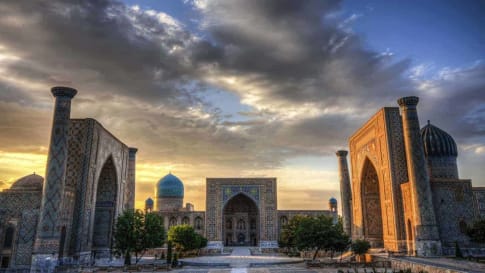
29 days
Aug, May, SepTravel on the Silk Road with Odyssey Traveller | Small Group Tour for Seniors
Visiting China, Kyrgyzstan
The Silk Road is an ancient trade route linking China and Imperial Rome through Central Asia. Few areas in the world remain as unexplored or offer such richness in terms of ancient and modern history, culture, and scenic diversity as Central Asia. Our Small group Silk road tours itinerary explores the Road through remote deserts and mountainous environments as we visit key sites between Xi'an and Bukhara.
From A$18,750 AUD
View Tour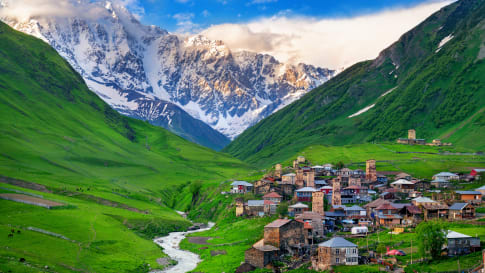
22 days
May, OctSmall Group Tour to the Caucasus | Armenia Azerbaijan Georgia
Visiting Armenia, Azerbaijan
This small group program is designed to give people an opportunity to explore Tbilisi, Baku, Yerevan as well as important monuments, historical and religious sites, diverse landscapes and ancient architecture by visiting the Caucasus Mountains and the lowlands of Armenia, Georgia and Azerbaijan. Led by local English speaking guides, there will be the opportunity to meet local people.
From A$11,835 AUD
View Tour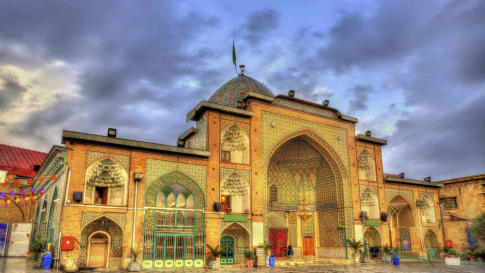
17 days
Sep, Nov, AprIran Culture and History Escorted Small Group Tour for seniors
Visiting Iran
Unlike its neighbours to the west and northwest, Iran had not adopted Christianity and it was the explosive spread of Islam and its ready adoption, without the Arabic language or customs, which helped unite the culture and greatly enrich Persian heritage. This small group tour program includes the great cities of Iran, historic sites, mosques, gardens, bazaars and teahouses for couples and solo travellers.
From A$11,825 AUD
View Tour